News
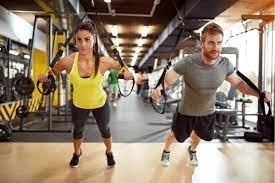
My Locker Will Rescue You From Your Workout Rut
We've all been in that situation. It's too hot or too cold or too rainy outside. You don't have the energy to go to the gym or the bandwidth to design your own workout. And searching YouTube for a reliable video? Good luck with that.
Enter: My Locker.
My Locker is your one-stop storage solution for everything related to TRX. Before diving into the workouts, take our quick fitness assessment quiz to find the perfect exercises for your level and goals. Accessible via desktop and mobile, you can use it to register TRX products like your Suspension Trainer or RIP Trainer, as well as download workouts. And if you haven't explored the TRX workout videos, they will blow your mind.
TAKE OUR TRAINING QUIZ
First, the workouts are incredibly affordable, priced between $4.95 and $6.95. (When was the last time you found a class for under $7?) Designed by some of the world's leading TRX instructors, these videos are the most efficient, cost-effective way to work out with a top trainer.
Second, TRX videos make it easy to target a specific muscle group or series of functional movements. Golfers, tennis players, surfers, and lacrosse enthusiasts can all follow along with workouts designed for their specific sports. Want to train like a Super Bowl MVP? There's a download that features four of Saints Quarterback Drew Brees' TRX Suspension Training exercise routines. Chasing that elusive six-pack abs? Then load up My Locker with new core workouts.
Third, there’s never been an easier way to take your TRX workouts with you when you travel. You can’t pack a suitcase full of fitness equipment every time you go on a trip, but you can take TRX and My Locker with you. Just set up your phone, tablet, or computer by your TRX Suspension or Rip Trainer, and you’ll be ready to sweat in a matter of minutes.
Third, there's never been an easier way to take your TRX workouts with you when you travel. You can't pack a suitcase full of fitness equipment every time you go on a trip, but you can take TRX and My Locker with you. Just set up your phone, tablet, or computer by your TRX Suspension or Rip Trainer, and you'll be ready to sweat in a matter of minutes.
Finally, My Locker lets you try—and save—entirely new types of workouts like TRX for yoga or a kettlebell combo class. If you feel nervous trying new TRX moves in front of strangers, this is a fantastic way to experiment with TRX techniques without feeling self-conscious.
Ready to get started? Once you've loaded a video or workout guide to My Locker, it will be waiting for you each time you log in. Videos and DVDs that you purchase can remain in My Locker forever, while videos that you access as part of your subscription will remain through the duration of your subscription.
In a traditional gym, your locker is that place you store the things you don't need while you exercise. With TRX, My Locker is the place you store your workouts. It's easy fitness at your fingertips, and it's a total game changer.
Do your next workout with our TRX equipment:
TRX® PRO4 SYSTEM
BUY NOW
TRX® HOME2 SYSTEM
BUY NOW
TRX® TACTICAL GYM
BUY NOW
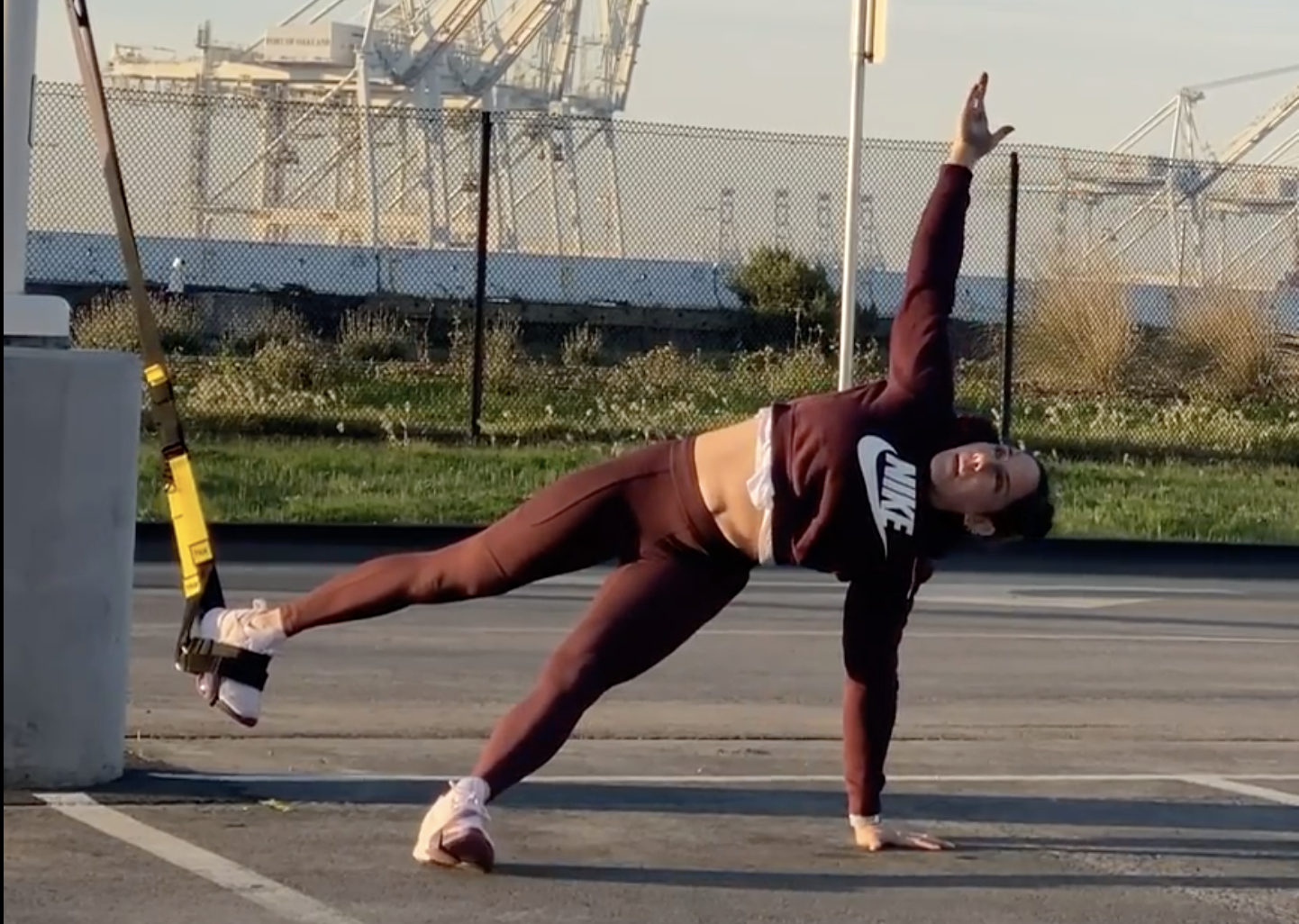
Moves of the Week: TRX Mountain Climbers
Another week, another TRX workout! In this edition of Moves of the Week, TRX for Yoga expert Shauna Harrison adds twists and challenges to the TRX Mountain Climber. Follow along with Shauna in the videos below, then try these moves for yourself on your TRX Suspension Trainer.
First, warm up with your basic TRX Mountain Climber. Start with your straps adjusted to the mid-calf length. You should be in the prone position, facing away from the anchor point with your toes in the foot cradles.
To execute the TRX Mountain Climber, plant your palms or forearms on the ground, and find a TRX Plank. From that plank position, draw one knee into your chest at a time, placing extra pressure on the foot cradle through the bridge of your extended foot to maintain core stability. (For bonus points, try piking your hips just a few inches each time you bring a knee toward your chest.) Return to your TRX Plank after each rep.
Want to perfect your mountain climber form? Take our quick assessment quiz to get personalized technique tips.
TAKE OUR TRAINING QUIZ
Next, upgrade the TRX Mountain Climber to a TRX Single-Leg Mountain Climber. Keep your straps at the mid-calf point, but this time begin in the prone position with one foot threaded through both foot cradles.
Float your free foot as you pop into your TRX Plank. If your left foot is in the foot cradles, you’ll draw your right knee toward your right elbow, then pivot through your hips to cross your knee under your body toward your left elbow.
We finish this week with a TRX twist on the Fallen Triangle pose. This move starts just like the TRX Single Leg Mountain Climber, but as you cross your bent knee under your body, extend your foot to the ground—like a kickstand—before opening your arms, similar to a TRX Single-Leg Side Plank.
There you have it: three moves that will build muscle and torch your core. Check back next week for more ways to test your limits with your TRX Suspension Trainer.

Moves of the Week: A 15-Minute TRX Home Workout
The gym isn’t the only place where you can crush your strength goals. This week, TRX Coach Zack Van Wagoner is sharing a 15-minute full-body workout that you can complete in your home with the TRX Suspension Trainer.
Before you can sweat, you need to set up your TRX Suspension Trainer. Inside your home, simply toss the TRX Door Anchor over a door, then shut the door to secure it. (If you have the option of locking the door without locking yourself out, you may want to do that as well.) Next clip your TRX Suspension Trainer onto the door anchor. In less than 15 seconds, you’re ready to work.
First up: Zack takes us through a few variations of the TRX Crunch. Start with your straps adjusted to mid-calf length, then begin facing away from the anchor point with your toes in the foot cradles. Press your palms or forearms into the ground, extend your legs straight and lift into a plank. To add a crunch to that plank, simply fold your knees into your chest while continuing to keep your body suspended over the floor. When you need a break, gently drop your knees back down to the ground. If you’re a seasoned pro, try staying up for the full 40-second set, or amp up your TRX Crunch by adding an oblique twist—driving your knees to your elbow.
After 40 seconds, give yourself 20 seconds to rest and transition to the next move: a TRX Sprinter Start.
For the TRX Sprinter Start, straps should be fully-lengthened, and you’ll face away from the anchor point with the straps threaded under your arms. Keep your chest forward, and walk your feet back until your body forms a 45-degree angle with the floor. If it’s your first time using TRX, the angle may feel a little weird, but the TRX Suspension Trainer will support your body weight.
Next, pick one foot to be your planted, or forward, foot: that foot will stay connected with the floor as your other foot steps back to a lunge. Return to your neutral position—with feet standing parallel—by driving off of your forward, planted foot and activating your front quad. Once you get the hang of that movement, you can add a balance component by not letting your “free” foot touch the floor at the front of the movement. Finally, you can either speed up or add a hop to each rep for an additional challenge. After 20 seconds of burn on the first leg, switch legs and repeat on the second side for 20 seconds.
We’ll finish a TRX Single-Arm Row. Set your straps at the fully shortened length. (Pro-tip: If you want to keep the free handle from hitting the door while you work, you can thread the free handle through the triangle of the handle you’re using.) Start with the handle in your left hand, with your elbow pulled back and tight to your body.) Your palm should face inward while holding the handle. Keeping your body squared with your anchor point, extend your arms all the way straight, then drive your elbows all the way back. As you complete reps, maintain your plank, ensuring that ears, shoulders, hips, and ankles are all in one line.
When you want to increase the difficulty of your TRX Single Arm Row, turn it into a TRX Power Pull by reaching your free arm up toward the anchor point, and rotating into an opener as you lower back down. Even as you lower down, you should maintain a plank. Just like you did with the TRX Sprinter Start, complete 20 seconds on each side.
Repeat this sequence five times for five rounds, and you’ll have a full-body 15-minute workout, right in your home.
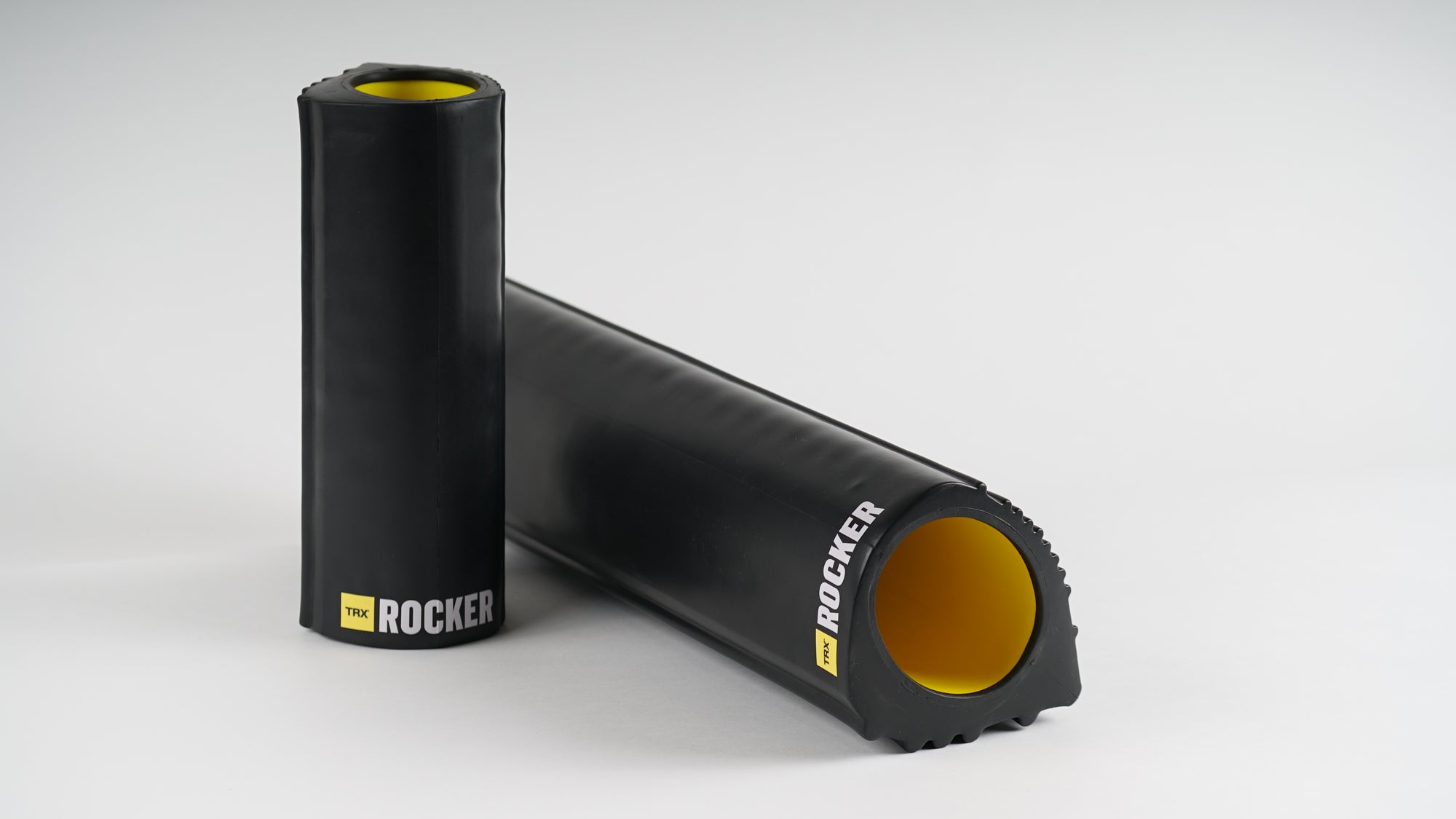
More Rock, Less Roll: Why You Need the TRX Rocker
Approximately 18 hours after a tough workout, it hits you: delayed onset muscle soreness, also known as DOMS. It’s the feeling you get when you wake up, but you can’t sit up in bed because your abs are aching from a core workout; the regret that sets in when sitting down and standing up seem like unreasonable measures because your butt hurts too much from deadlifts.
DOMS is a symptom of microscopic tears in your muscles. (It sounds like something out of a horror film, but it’s actually a good thing.) That pain means your muscle is growing after a workout. Despite that silver lining, pain isn’t fun, and there is a way to minimize DOMS: myofascial release.
Most people turn to massage or foam rolling for myofascial release, and—let’s be honest—neither a sports therapy massage nor a marathon session with the foam roller are particularly fun. The reason either solution works is it requires applying and releasing pressure to tight areas of tissue. The drawbacks? Massage is expensive, and it’s easy to skip out on foam rolling when things get uncomfortable. The TRX Rocker provides a better, affordable alternative. Let’s talk about why.
Standard foam rollers come in a uniform density or pattern: you either get a smooth cylinder, or a bumpy style, depending on what you’re in the market for. The TRX Rocker, by contrast, has three contact points: a low intensity, lightly-grooved side for more gentle massage, a medium intensity, more deeply-grooved side for deeper release, and the apex of the two sides, for high-intensity target areas. Instead of purchasing three foam roller styles, you can get everything in a single tool with the Rocker.
Even better, the Rocker’s unique, tear-drop shape is more intuitive for myofascial release. Imagine placing a standard foam roller on its long side, and kicking it: it would continue rolling away until it lost momentum. A foam roller wants to do the same thing when you’re using it. You’ve probably noticed that your shoulders have to work a lot while you’re foam rolling to move your body across the roller. The Rocker shape is designed to rock back and forth, so using it is less draining on your upper body.
With a new year comes renewed commitment to exercise and wellness. Each January, people dive into a workout routine, and spend days on the flip side hobbling around town with DOMS. It’s time to break the cycle. Instead of looking at your fitness goals as a way to punish yourself for bad choices of the past, embrace the opportunity to treat your body better in the New Year. Whether you drop into a Spin class, take your dog for a run, or spend hours on your TRX Suspension Trainer, be sure to treat your body right. This is the time for you to get on a roll with your TRX Rocker; are you ready to accept the challenge?
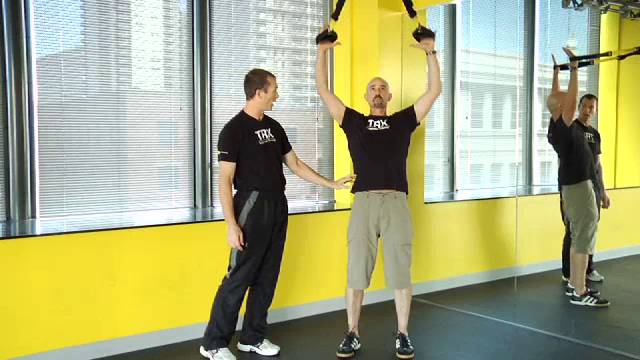
Mobility vs Flexibility With TRX
Get the most out of your TRX workouts by incorporating an understanding of flexibility and mobility, and how it relates to building your total body fitness. In the wide world of fitness talk, flexibility and mobility are two terms that are often thrown around interchangeably, uttered in the same breath, assumed to mean the same thing. However, this is not really the case, certainly not at TRX. Let’s break this down a little.
When we refer to flexibility, we are talking about the total available range of motion. In the video above, you can see the shoulder flexibility of TRX Director of Programming, Noah Rolland, expressed by his ability to lift and lower his arm. This does not necessarily express how well one can use that range of motion; that is where mobility comes into play.
Mobility is how well you can move through a range of motion. In essence, mobility capitalizes on your flexibility. Being able to use your full range of motion while performing a strength building exercise first requires flexibility, and then mobility is used to move the load through your full range of motion utilizing strength.
It may sound trivial, but an understanding flexibility and mobility as two separate but interdependent elements is crucial to your fitness. It may sound trivial, but an understanding flexibility and mobility as two separate but interdependent elements is crucial to your fitness. Want to discover exercises that match your current flexibility and mobility levels? Take our quick assessment to get personalized recommendations that work for your body.
TAKE OUR TRAINING QUIZ
For example, how often while training do we see our strength limited by poor mobility (being able move through a full range of motion) because we have poor flexibility?
Watch as Noah along with TRX Director of Sports Medicine Brian Bettendorf show you how you can modify a strength exercise, the TRX Split Fly, into a mobility drill by changing Noah’s angle relative to the anchor point and modifying his foot position, thus unloading the movement. This provides a good example of how flexibility, mobility and strength are all related yet separate entities requiring individual focus.
Do you use the TRX Suspension Trainer for mobility drills before you perform a strength workout? Maybe you should start.
If you want more mobility and flexibility workouts, check out our TRX for mobility and flexibility training page.
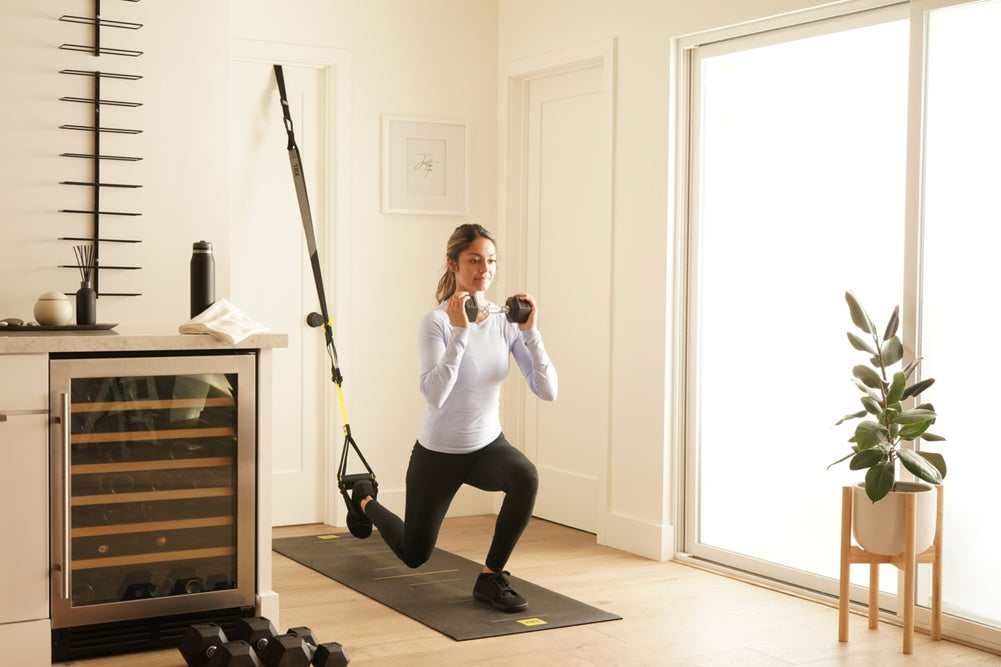
Mixing Suspension Training with Kettlebells
Discover a powerful workout combination with suspension training and kettlebells by TRX. Learn the benefits and tips for incorporating them into your routine.

MILITARY INSPIRED TRX COMBAT-READY WORKOUT
For most of us, training is a means to staying healthy, mobile, confident (ie. looking great for swimsuit season), etc... All valid motivators. But for our men and women in uniform, the fight to stay fit is a paramount component to protecting our lives and freedoms - perhaps a slightly more daunting goal than simply “looking and feeling good.”
TRX’s ties with the military run deep. Not only was the TRX Suspension Trainer conceived in the military, but TRX products, education and programming have become ubiquitous tactical PT staples. Something we are extremely proud of.
TRX Master Instructor, Brandon Wagoner, is a large part of this feat as he has been leading TRX Education Courses for active duty personnel for nearly a decade. His work with the military has been profound, or as he puts it, “one of the most rewarding experiences of my professional career.”
Wagoner adds, “While I enjoy leading all TRX Courses - to both civilians and active duty personnel - there’s something unique about [working with the military] in that it gives me a sense of obligation that’s hard to put into words. In many cases, the individuals that are taking these courses are putting their lives at stake to protect our everyday freedoms. Needless to say, I take the job of helping them stay in peak condition very seriously. When I step onto that teaching platform, I’m highly cognizant of the fact that the lessons I’m sharing with them could contribute to saving the life or lives of others. I realize my part in that process is relatively small, yet it feels significant.”
In honor of our servicemen and women this Veterans Day, Wagoner has created this military inspired "combat-ready" workout. Want to train with military-style intensity? Take our quick assessment quiz to get a personalized tactical training plan. These exercises are designed to build the strength, durability, endurance and agility needed for military readiness.
TAKE OUR TRAINING QUIZ
TRX "COMBAT-READY" WORKOUT
How it works: Do 8-10 reps of each exercise. Repeat the entire series 2-4 times.Total Time: Up to 30 minutesYou will need: TRX Suspension Trainer
1. TRX INVERTED ROWS This exercise is excellent for developing integrated core, upper and lower back strength.
Squeeze your shoulder blades together and use your lats to pull your body up until your hands are at the side of your rib cage. Slowly lower your body back down to the start position.
2. TRX SPIDERMAN PUSH-UPSThis exercise mimics crawling patterns as well and developing total-body strength.
Put your toes in the foot cradles. Lift the hips so you are in push up position. Perform a push-up. At the end of the push-up movement, lift hips up and pull both knees to the elbows.
3. TRX SQUAT JUMP Increase leg strength as well as improving explosive power and deceleration of load.
Stack elbows under shoulders, feet hip width apart. Lower hips down and back, weight in heels. Drive through heels, squeeze glutes, lift chest.
4. TRX POWER-PULL Total body exercise that increases strength in pull mechanics and helps develop rotation and unilateral strength.
Slowly lower your body away from the anchor point with your working hand, letting yourself rotate away, until your non-working hand is reaching toward the ground. Maintain your plank. Pull yourself back to the start position in one controlled movement until your non-working hand is touching the suspension trainer. Repeat on both sides.
5. TRX BURPEEIncrease single leg strength, power, explosiveness and stability in all planes. Simulates going from the crawl to standing and potentially to a run.
Adjust the TRX Suspension Trainer so that the bottom of the foot cradles are at the middle of your calf. Stand facing away from the TRX and place one foot in both cradles. Lunge down and lower your hips while driving your suspended leg back, until back knee is two inches from ground. Place your hands on the ground and hop your grounded leg straight back to a plank position. Perform a push-up then hop your grounded leg forward and explode up to a jump.
6. TRX OVERHEAD SQUATEngages more than 200 muscles in the entire body, enhances strength in the posterior chain, improves squat mechanics, mobility in shoulders and hips, and stability in the core.
Stand facing the TRX with your hands extended over your head in the foot cradles, pulling back so that there is tension on the straps. With your feet shoulder-width apart and your hands still overhead, squat down until your thighs are parallel with the ground.
If you want a complete tactical conditioning program, download the new TRX FORCE Super App here.
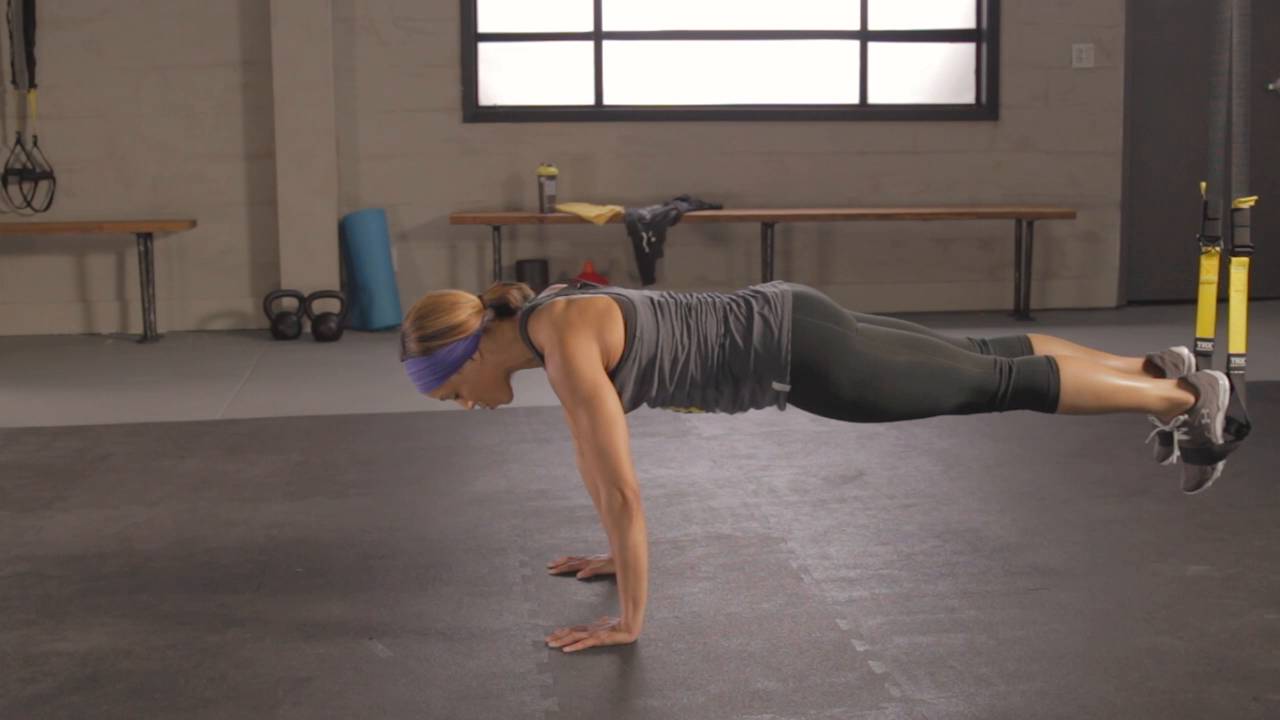
Metabolic Burn Workout: 15-Minute Fitness with Basheerah Ahmad and TRX
If you want an awesome workout to ignite your metabolism and burn a ton of calories, fast, try this quick and effective 15-minute, total-body blast from celebrity trainer Basheerah Ahmad and TRX. Designed to help you get an incredible results in the time you have, this workout will get your heartrate up and your waistline down. No matter what your fitness level, there is a modification for each of these five exercises that anyone can perform.
Perform each exercise for 60 seconds, resting for 30 seconds between each exercise. After you finish the full sequence, start at the top and work your way back through only this time use the opposite leg.
TRX Push UpStart in a plank position with your toes in the foot cradles of the TRX Suspension Trainer and your hands under your shoulders. Use your arms to lower yourself down in one controlled motion until your chest is just above the ground. Brace your core and drive your body up, maintaining a plank position to return to the start.
TRX PikeGet in a pushup position with your feet in the foot cradles of the Suspension Trainer, directly under the anchor point. Brace your core and pike your hips up while letting your head drop between your arms, and moving your feet toward your upper body. Drop your hips back down under control, and return to a plank position
TRX Atomic Push UpsStart in a pushup position with your feet in the foot cradles of the Suspension Trainer, directly under the anchor point, and your hands under your shoulders. Brace your core and perform a pushup. When you reach the top of the push up, pause for a moment and perform a TRX crunch by drawing your knees toward your chest and pikeing your hips up slightly. Pause for a moment at the top, then lower your hips back down and straighten your legs to return to the start position.
TRX Suspended LungesStart standing on one leg facing away from the anchor point with one foot suspended in both foot cradles. Brace your core and focus on standing up straight as though you are performing a single-leg plank while standing up. Drop your hips down and back into a deep lunge. Keep the shin of your working leg vertical and your chest up. Stop at the bottom when working knee is at 90 degrees. Drive through your front leg to return to the top of your lunge. Engage your core and keep your chest and head up throughout the entire movement.
TRX Squat JumpsAdjust the TRX Suspension Trainer to mid length. Stand facing the TRX with your feet hip width apart. Position your elbows under your shoulders and lower your hips down and back, keeping your weight in your heels. Squeeze your glutes and drive your hips up to explode and jump at the top of your squat. Use the TRX straps to help you decelerate and land as softly as possible. Keep your chest lifted throughout the movement.
If you want more fat-burning, muscle-toning workouts from Basheerah and TRX be sure to watch the rest of the 15-Minute Fitness Workout series, here.

Matt Dixon Run Drill #6: Side-To-Sides
In this video, Triathlon Coach Matt Dixon of Purplepatch Fitness explains how to perform two lateral movements. First up is Crossovers. Start by standing upright with shoulders and hips facing forward. Cross your back leg behind the lead leg, swinging your arms opposite to that leg, and then step to the side with the lead leg, again swinging your arms in the opposite direction. Continue for 15 seconds and then stop and move in the opposite direction.
For the side to side movement, start by standing upright with shoulders and hips facing forward, feet shoulder-width apart. Step out with the lead leg and then push with the following leg to bring the feet back to the start position. Continue this rhythmic action, combined with swinging arms, for 15 seconds and then stop and move in the opposite direction.
Next up in the series, we'll cover our final drill, Strides.
For more on Matt Dixon, visit purplepatch fitness (purplepatchfitness.com) or check him out in Outside magazine. TRX has partnered with Dixon to offer you a variety of interactive training plans available on TrainingPeaks.com. For a FREE demo, click here.
